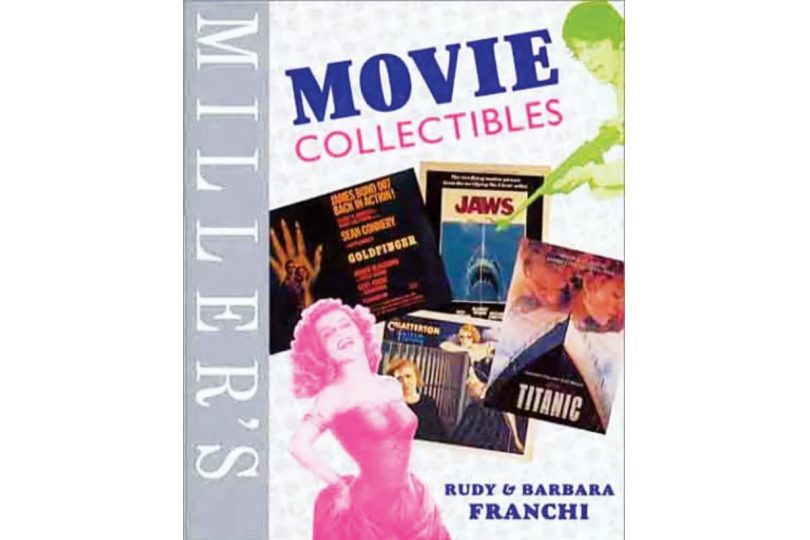Hollywood might not be the biggest film industry in the world but it is clearly the most followed, the most organized, and the most loved. Through Miller’s Movie Collectibles, the readers will also get to know that there is no industry as charismatic as Hollywood because it has been entertaining the audience for more than 100 years.
This comprehensive guide talks exclusively about the most ignored aspect of a big-budget production – posters. After the film is released and becomes successful, people talk about the director, the actors, the writers, and others but no one talks about the posters that introduced the film to the world. This large guide concentrates exclusively on posters, mostly from the last century when everything was done by hand, instead of computers. Not only does going through this guide take the audience down memory lane, but it also brings back memories of those films which might or might not have been forgotten.
It would be incorrect to think that this book is just limited to the United States of America since it houses the posters of many international films. In fact, it tells the readers that before Hollywood became a separate entity, the world was full of French and British films which showed the audience the perspective of an outsider. Don’t be surprised to know that people like Alfred Hitchcock and Clint Eastwood owe their success to international cinema and wouldn’t have been able to achieve stardom in the United States, had they not crossed borders for greener pastures.
The book is divided intelligently into different chapters which cover genres such as Film Noir, Movie Stars, James Bond, Star Wars, and Disney & Other Animation to name a few. Every poster seems to have a story behind it, which is described in the text alongside the picture of that poster. If that poster is older than fifty years, then it’s worth more than its original price, and if it’s one of its kind, then it’s priceless, to say the least. Even then, every poster has a price which is mentioned in this book for those who are interested.
If you think that’s enough then think again, because the book also lets the audience ‘evolve’ once they are done with it, because they move from the black and white era, to the golden era, and finally into the modern era, in one sitting. Be it the posters of musical films or ones that went on to win an Academy Award, every film that has a poster worth discussing gets discussed in this book. From Horror and Science Fiction to Black Cinema and Foreign Posters of U.S. Films, all is mentioned in a chapter of their own, because had it not been for these eye-catching designs, those films might not have achieved the kind of success they eventually did.
For those who believe that the poster of a film isn’t long-lasting, this book is proof that film posters can outlast a film if they are marketed correctly. The posters of their films like Planet of the Apes, Bullitt, Vertigo, and Cat on a Hot Tin Roof are still valid and in demand, because they were created with an observant eye, one that not only kept the traditions of that era in mind but the future as well. Don’t be surprised to see a different kind of Warner Bros logo on the poster of My Fair Lady or to find out that the iconic The Graduate poster wouldn’t have been possible had the first one been approved.
The price range mentioned on the posters might have changed with the passage of time but the value of and the story behind the film posters hasn’t. Just like James Bond, who gets a special chapter for its posters, every major film from the 1960s, 1970s, and 1980s that had a progressive poster gets mentioned here. Jack Nicholson’s Chinatown, Clint Eastwood’s The Gauntlet, or Mel Gibson’s Mad Max, the story behind each and every iconic poster is revealed to the readers here who might remember the poster, but not the story behind its creation.
And then there is the section on other memorabilia, including Press Kits, Pressbooks, Stills, Standees, and Film books, which have stood the test of time. Not only does the book instruct the readers on how to care for and restore a collection if they get their hands on one, but it also explores the world of promotional items through which a plastic drinking cup, released before Jaws 2, a millennium countdown clock to Armageddon or a CD featuring the soundtrack of Bedazzled can also land in anyone’s lap, and make him a rich person after a few years. And if that item – a photograph, an envelope, a letter, or a postcard – is autographed, then the holder might be considered a millionaire even before laying his hands on the money.
Miller’s Movie Collectibles might seem like a routine book talking about films but what it really does is unravel the mysteries of a highly popular collecting era, which began through lobby cards, graduated to photographs, and is now ruling the world through film posters. Not only does it tell the readers how to spot a fake from an original, but also what steps to follow if you want to be known as a collector, instead of being a person who only appreciates a collection. -Ends







